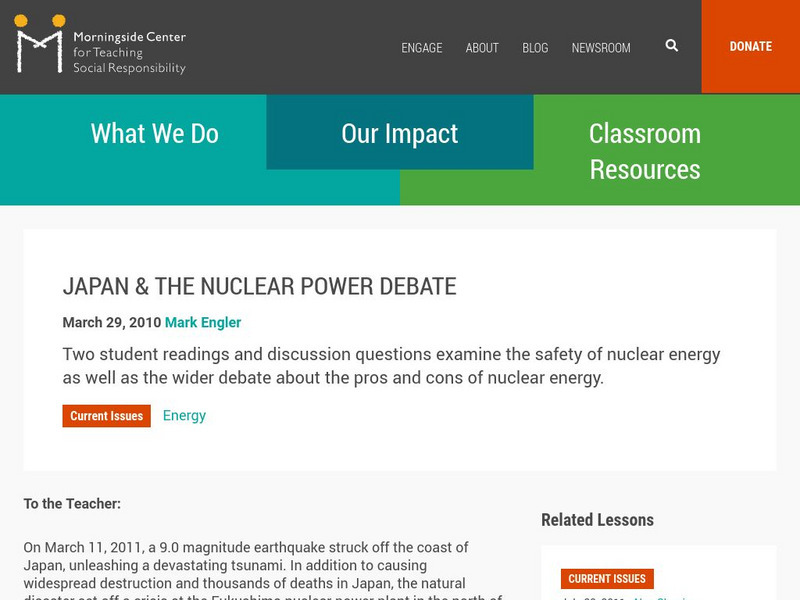Hi, what do you want to do?
Incorporated Research Institutions for Seismology
Iris: Can Humans Cause Earthquakes?
A class investigation studying whether or not human factors can cause earthquakes through hydraulic fracturing.
Incorporated Research Institutions for Seismology
Iris: Earthquakes, Like Ripples on Water?
In this activity, students investigate the classic Earth science analogy, "Seismic waves radiate outward from an earthquake's epicenter like ripples on water."
University of Houston
University of Houston: Earthquakes
This exercise will help students understand the plate boundaries of earthquakes.
Science Buddies
Science Buddies: Measuring the Earth's Core With Seismic Waves
When an earthquake occurs, seismic shock waves travel out through the earth from the source of the event. The shock waves travel through the earth (body waves), or along the Earth's surface (surface waves), and can be recorded at remote...
American Geosciences Institute
American Geosciences Institute: Earth Science Week: Modeling Earthquake Waves
Students model earthquake waves with a slinky toy.
Center for Innovation in Engineering and Science Education, Stevens Institute of Technology
Ciese: Musical Plates: Designing an Earthquake Resistant Structure
A lesson where pupils look at how the sudden movement in an earthquake causes a building to collapse, and how to design a building that can withstand it.
Science and Mathematics Initiative for Learning Enhancement (SMILE)
Smile: Earthquake Waves and Their Destructions
Looking for the epicenter of an earthquake and measuring the magnitude of waves are goals for pupils in this lesson plan for intermediate to middle school students. Pupils get to analyze the P and S waves.
PBS
Pbs News Hour: The 1906 San Francisco Earthquake (Lesson Plan)
A instructional activity that directs students through an examination of primary documents related to the 1906 San Francisco earthquake and fire. The plan also provides instructions for leading students through a discussion of how...
Science Education Resource Center at Carleton College
Serc: Getting to the Point: Exploring Tectonic Motion Point Reyes Seashore
The intent of this module is for students to make straightforward numerical calculations as they learn about earthquake geology at a National Park.
Science Education Resource Center at Carleton College
Serc: Bot Ec: The San Andreas Fault's Rate of Movement
The San Andrea is an active fault zone, marked by frequent earthquake activity. The crust southwest of this strike-slip fault (including Los Angeles) is sliding to the northwest relative to the other side. It is possible to estimate the...
Museum of Science
Ei E: Shake Things Up: Engineering Journal [Pdf]
A 34-page student journal of worksheets to accompany a lesson unit on designing buildings that will withstand an earthquake. [SEE: http://eie.org/sites/default/files/es_educator_guide_2014_10_09.pdf] First, they work on simple...
Center for Innovation in Engineering and Science Education, Stevens Institute of Technology
Ciese: Musical Plates: Engineering Application: Keeping Afloat
A lesson that looks at how to design a building so that it will withstand an earthquake and not sink or lean over.
Other
Tech Museum: Building for the Big One [Pdf]
This resource presents a project where students design and build structures that can withstand an earthquake. The project can include an extension where students look at the factors of soil type and proximity to fault in their design....
PBS
Pbs News Hour Extra: Lesson Plan, Future of Haiti
In this lesson, designed for grades 7 -12, the students will explain the social and economic achievements of Haiti, articulate the horrific consequences of the earthquake, describe the ways the economy responded to catastrophe and...
Choices Program, Brown University
Choices: Teaching With the News: The Haitian Crisis: Thinking Historically
Lesson from 2010 using multi-media resources, including video, audio, and primary sources which challenge young scholars to think beyond the earthquake and consider the role of Haiti's rich history in the crisis.
Other
Digital Library for Earth System Education: Teaching Box: Mountain Building
A suite of lessons focusing on all aspects of how mountains are formed. Inquiry-based exploration of mountain building includes the rock cycle, mountain formation, plate tectonics, earthquakes, volcanoes, erosion, rocks, minerals, and...
Science Buddies
Science Buddies: Liquefaction & Seismic Activity
Earthquake damage can be intensified in areas that are subject to soil liquefaction. For example, in these areas, soil movement may cause foundations to collapse, while structures in nearby areas built on more stable soil or bedrock may...
PBS
Pbs: Earth Science Exploration
An earth science collection where learners can explore earthquakes, volcanoes, and more natural phenomena. The collection uses videos and interactive activities to investigate our dynamic planet and earth systems.
PBS
Nova Teachers: The Day the Earth Shook: Classroom Activity
Challenge your young scholars to design a building that will withstand an earthquake. Using materials like 3x5 cards and paperclips, students design three different buildings and test their effectiveness.
Purdue University
Purdue University: An S and P Wave Travel Time Simulation
A classroom simulation modeling how earthquake waves travel through Earth at different speeds. A graph is constructed to demonstrate the relationship between the distance and time of travel of seismic waves, and then used to locate the...
Indiana University
Indiana University Bloomington: Modeling Liquefaction [Pdf]
This activity allows students to observe a small-scale model of liquefaction, a hazard associated with strong-magnitude earthquakes. The sand, water, and ping pong ball(s) represent the composites of soil: sediment, water, and air,...
American Geosciences Institute
American Geosciences Institute: Earth Science Week: Seismic Calendar
Students investigate how often earthquakes of various magnitudes happen within specific geographic regions.
Other
Teaching Social Responsibility: Teachable Moment: Japan's Nuclear Power Debate
Readings and news articles provide information on the debate over nuclear energy. In particular, the questions being raised due to the crisis in Japan after the earthquake and tsunami in March, 2011.
Science Education Resource Center at Carleton College
Serc: Impact of Natural Disasters on the Earth
Through demonstrations and other research, students explore the impact of various natural disasters on the earth. The disasters include floods, tornadoes, hurricanes, volcanoes, and earthquakes.
Other popular searches
- Volcanoes and Earthquakes
- San Francisco Earthquake
- Earthquake Proof Buildings
- Indian Ocean Earthquake
- Earthquakes and Epicenter
- Web Quest Earthquakes
- Plotting Earthquakes
- Earthquake Lab
- Earthquake Vocabulary
- Volcanoes Earthquakes
- Earthquake Safety
- Earthquakes Epicenters






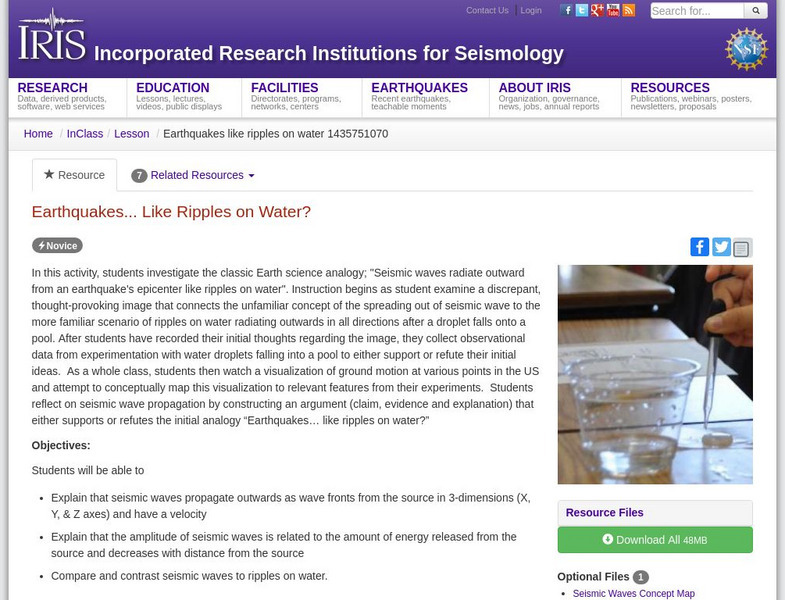
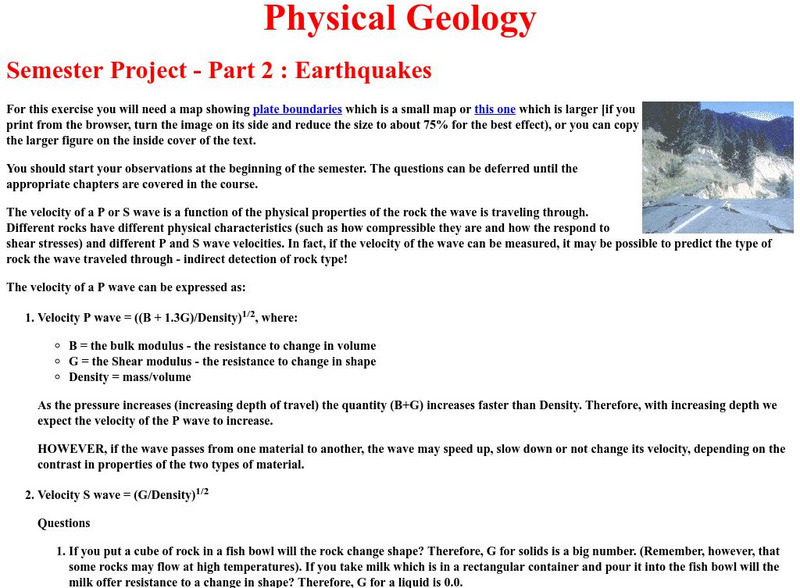
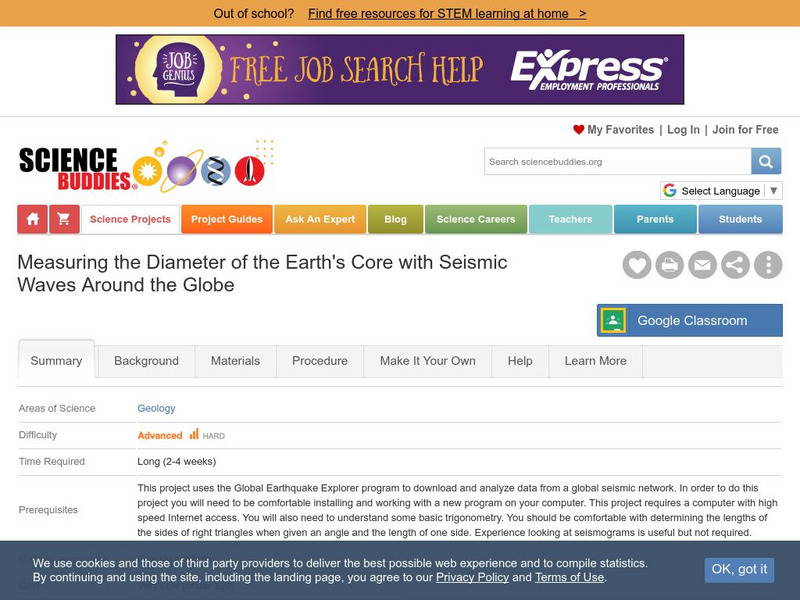






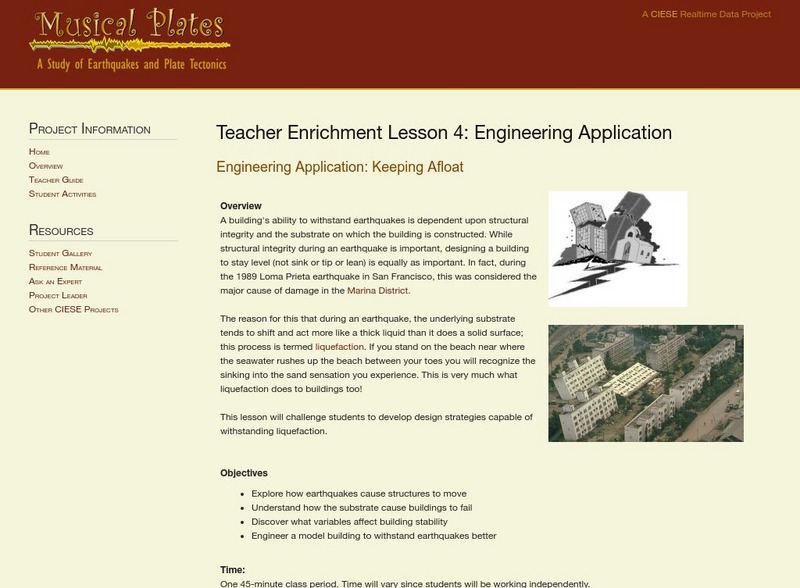
![Tech Museum: Building for the Big One [Pdf] Lesson Plan Tech Museum: Building for the Big One [Pdf] Lesson Plan](http://lessonplanet.com/content/resources/thumbnails/411264/large/bwluav9tywdpy2symdiwmduymc0xmdm2my0xd3vtenpxlmpwzw.jpg?1589993199)




